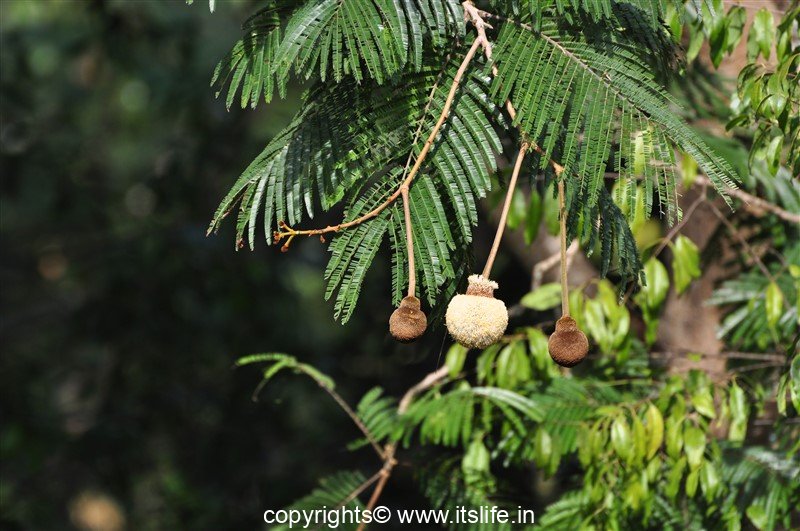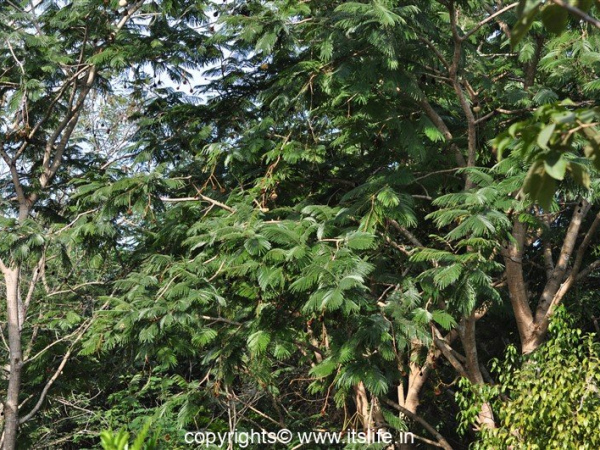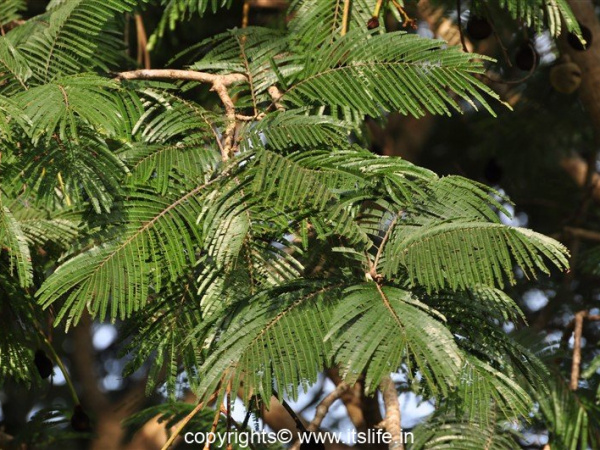The other common names of Badminton Ball Tree are African locust tree, Gong-stick tree. In Kannada, it is known as Shivalingada mara, Hindi it is Chendul-Ka-jhar, Marathi it is known as Chendu phul. The botanical name is Parkia biglandulosa and belongs to Mimosaceae (Touch-me-not) family.
Badminton Ball Tree is native of West Africa. The tree grows tall with many spreading branches. The leaves are green and bipinnate with many leaflets and resembles the Jacaranda and the Gulmohar tree leaves.
The leaves are one foot long and the leaflets are quarter inch long. There are 30 species of Badminton Ball tree.
This tree grows abundantly in India and are planted in parks and avenues.
Badminton Ball Tree blooms during December and January in India. On around 2 feet long branches, you will see rust coloured flower heads hanging on the tree.
These turn into fluffy white flower balls. The size of the ball increases and shines bright in the sunlight.
Bats, Bees, and squirrels are attracted to the flower.
The pulp surrounding the seed is edible and so are the seeds. The seeds taste like garlic. Propagation of the tree is by seeds.
All parts of the tree are used in native medicine to treat many ailments.




